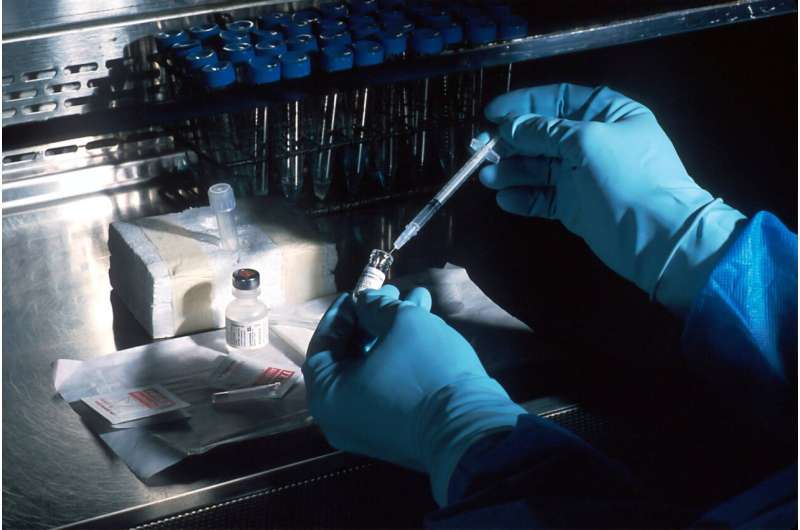This article has been reviewed according to Science X's editorial process and policies. Editors have highlighted the following attributes while ensuring the content's credibility:
fact-checked
peer-reviewed publication
trusted source
proofread
Years after his death, late scientist's work could yield new cancer treatments

Some of the final work of a late University of Virginia School of Medicine scientist has opened the door for life-saving new treatments for solid cancer tumors, including breast cancer, lung cancer and melanoma.
Prior to his sudden death in 2016, John Herr, Ph.D., had been collaborating with UVA Cancer Center's Craig L. Slingluff Jr., MD, to investigate the possibility that a discovery from Herr's lab could help treat cancer.
Eight years of research has borne that idea out: Herr's research into the SAS1B protein could lead to "broad and profound" new treatments for multiple cancers, many of which are very difficult to treat, Slingluff reports in a new paper in the Journal for ImmunoTherapy of Cancer. Herr is listed as a senior author on the paper.
"John was very excited about this protein SAS1B to be a valuable new target on human cancers, and I am delighted that our findings together further support his hope to make such a difference," said Slingluff, a surgical oncologist and translational immunologist at UVA Health and the UVA School of Medicine.
"The work we published included work done by Dr. Herr and his team over a period of years, as well as our subsequent work together; so, I am glad that the journal agreed with our request to include John as a senior author."
Promising new cancer target
Herr's lab was not originally focused on cancer—he was the head of UVA's Center for Research in Contraceptive and Reproductive Health. In that role, he developed the first home fertility test for men, SpermCheck, which is available in pharmacies across the country. But his discoveries about the SAS1B protein found in developing eggs in women could pave the way for new cancer immunotherapies.
While SAS1B is found inside female reproductive cells called oocytes, it is also found on the surface of many different solid cancer cells, Slingluff's new research verifies. Importantly, it did not appear on the surface of any of the other normal cells Slingluff's laboratory tested. That suggests that doctors may be able to develop use antibody-based immunotherapy—such as antibody-drug conjugates or CAR T-cell therapy, a strength of UVA Health—to attack the cancer cells while sparing healthy tissue.
"Selectively targeting SAS1B has the potential to have broad and profound impact on the treatment, and therefore reduction in mortality, of multiple malignancies," Slingluff and his colleagues write in their new paper.
While much more work needs to be done, the new findings are promising. If the approach is successful, it could be a big step forward in cancer care. Many solid-organ cancers are extremely difficult to treat, and patients often have few good treatment options, Slingluff notes.
"Immune therapy is revolutionizing treatment of human cancers," Slingluff said. "But some cancers have been particularly resistant to immune therapy because of the lack of good targets on those cancers. We hope that this work that John Herr started will bring new hope to patients with those cancers."
More information: Arabinda Mandal et al, Cancer-oocyte SAS1B protein is expressed at the cell surface of multiple solid tumors and targeted with antibody-drug conjugates, Journal for ImmunoTherapy of Cancer (2024). DOI: 10.1136/jitc-2023-008430




















